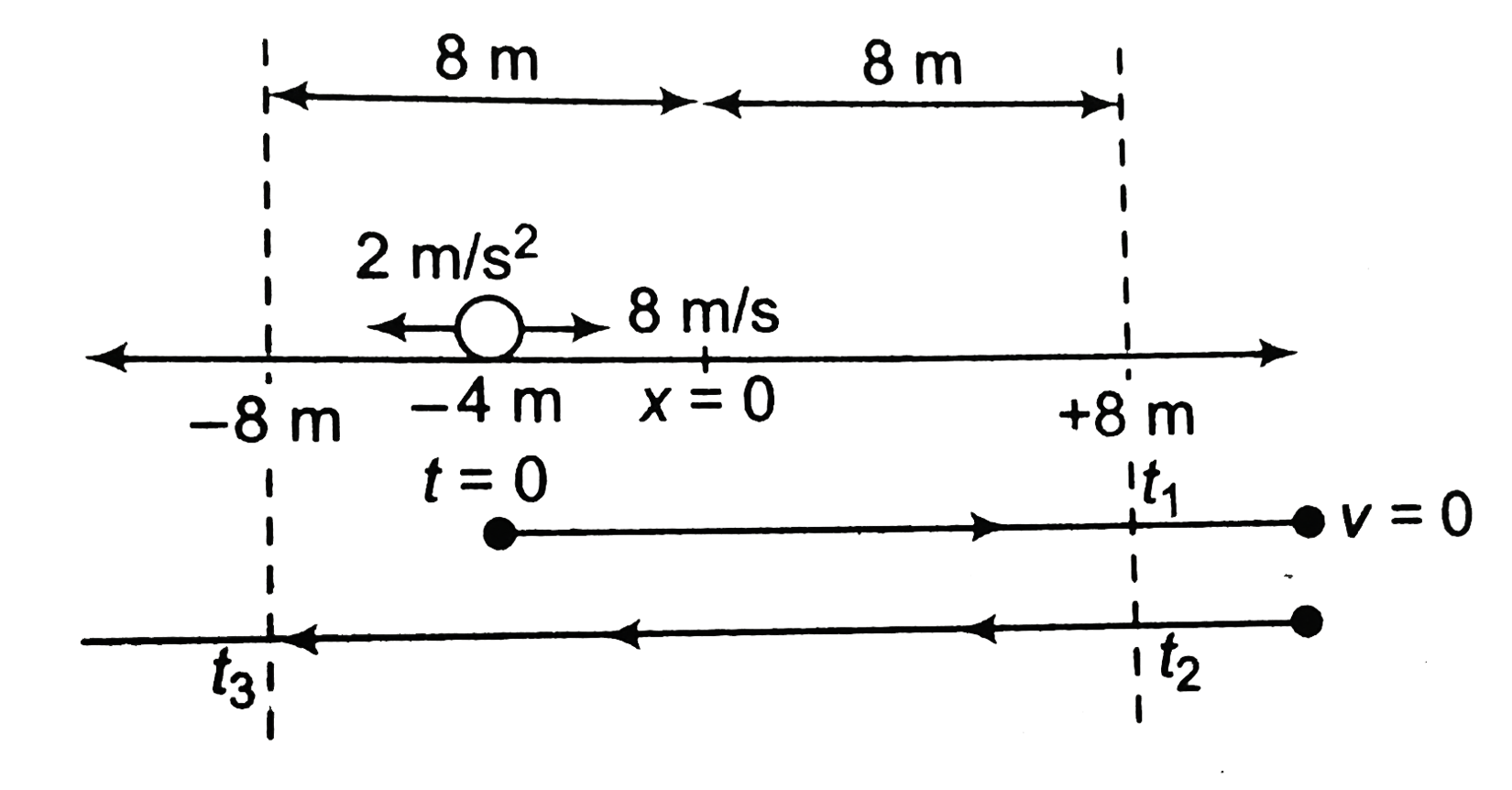(a) Comparing the given v-t equation with `v=u+at.` we have,
`u=8 m//s` and
`a=-2 m//s^2=constant`
Now, motion of the particle is as shown below.

Now, `8m` distance from origin will be at two coordinates `x=8m and x=-8m.` From the diagram, we can see that particle will cross these two points three times, `t_1,t_2,and t_3.`
(b) `t_1` and `t_2`: At `x=8 m` displacement from the strating point is
`s=x_f-x_i=8-(4)=12 m`
Substituting in `s=ut+1/2 at^2,` we have
`12=8t-1/2xx2xxt^2`
Solving this equation, we get
smaller time `t_1=2s`
and larger time `t_2=6s`
`t_3`: At `x=-8m,` displacement from the starting point is
`s=x_f-x_i=-8-(-4)=-4 m`
Substituting in `s=ut+1/2at^2,` we have `-4=8t-1/2xx2xxt^2`
Solving this equation, we get the positive time,
`t_3=8.47s`